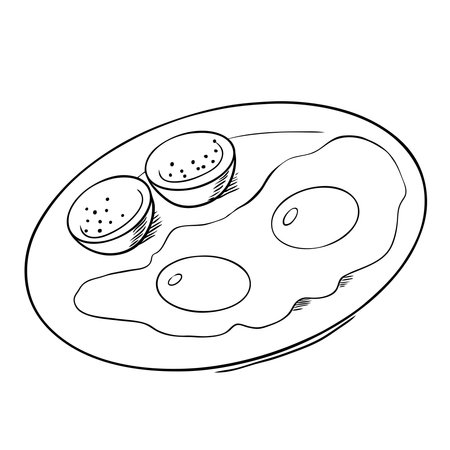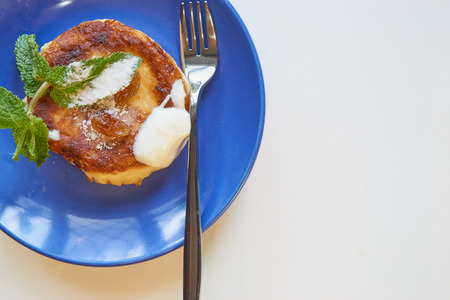Introduction: The Charm of British Tea Time
There’s something truly enchanting about the British tradition of tea time—a ritual woven into the very fabric of daily life across the UK. From the rolling hills of Devon to bustling London tea rooms, gathering for a cuppa and a sweet treat is far more than a simple pause in the day; it’s a moment steeped in heritage and community. Whether it’s the buttery scone crowned with clotted cream and jam, the comforting warmth of a toasted crumpet, or a slice of feather-light Victoria sponge, these beloved bakes are at the heart of British culture. As we cherish these classic delights, there’s growing curiosity around how we might enjoy them with a little less sugar, striking a balance between tradition and wellbeing. In this series, we’ll explore what makes these treats so special—and how small tweaks can help us savour every bite while caring for our health.
Spotlight on Sugar: Traditional Recipes and Consumption
When it comes to British culinary culture, few things are as iconic as a scone topped with clotted cream and jam, or a toasted crumpet dripping with butter. These beloved treats have delighted generations, but behind their comforting flavours lies a common thread—sugar. Over the decades, sugar has played a pivotal role in shaping not just the taste, but also the texture and tradition of these classic recipes.
The Sweet Tradition: How Much Sugar?
Historically, sugar was once a luxury in Britain, reserved for the upper classes and high days. As access increased post-Industrial Revolution, home bakers began to add more sugar to everything from Victoria sponge to Eccles cakes, enhancing flavour, extending shelf life, and providing that signature golden crust. But how much sugar do these treats actually contain?
| Treat | Average Sugar Content (per serving) | Traditional Role of Sugar |
|---|---|---|
| Scone (with jam & cream) | 15-20g | Flavour, moisture, browning |
| Crumpet | 1-2g | Fermentation, subtle sweetness |
| Victoria Sponge Slice | 22-30g | Softness, structure, sweetness |
| Battenberg Cake Slice | 25-28g | Sponge texture, marzipan flavour |
| Biscuit (Digestive) | 4-5g | Crispness, caramelisation |
Sugar’s Influence on Taste and Texture
Sugar doesn’t just sweeten; it contributes to the crumb of a cake, the chewiness of biscuits, and even the rise of a well-made scone. It balances tart berries in jam and gives that appealing golden hue to pastries fresh out of the oven. This deep-rooted relationship between British baking and sugar has defined what we recognise as “proper” texture and flavour in our favourite teatime nibbles.
The Evolution of Sweetness Over Time
If you compare recipes from the 1950s to today’s versions, you’ll notice a steady increase in sugar content until recent years when health trends started influencing home baking again. Yet many traditionalists argue that reducing sugar risks losing authenticity—a debate at the heart of modern British food culture. As we look towards healthier alternatives, understanding where sugar fits in is key to preserving both taste and tradition.

3. Why Lower Sugar? Health and Wellbeing in Britain
The British love affair with sweet treats is no secret, but over recent years, concerns about sugar consumption have been steadily growing. With classics like Victoria sponge, cream tea, and crumpets forming part of our cultural fabric, it’s easy to overlook how much sugar quietly slips into our daily routines. However, the impact of high sugar intake on public health in the UK has become impossible to ignore.
Rising Awareness: The Sugar Debate
Across Britain, conversations around food are increasingly focused on wellbeing. Studies link excessive sugar consumption to issues such as obesity, type 2 diabetes, and dental problems—ailments that affect millions of Britons each year. Parents worry about their children’s lunchboxes, and adults are rethinking their habitual mid-afternoon biscuit or sweetened cuppa.
National Initiatives for a Healthier Future
In response to these concerns, the government and health organisations have launched several initiatives aimed at reducing national sugar intake. Notably, the Soft Drinks Industry Levy (known affectionately as the “sugar tax”) has encouraged manufacturers to reformulate products. Campaigns like Change4Life offer practical tips for families keen to cut down without sacrificing enjoyment.
A Shift in Tradition
While there’s pride in British baking traditions, there’s also a growing movement toward balance—a desire to preserve cherished recipes while making them kinder to our bodies. This shift isn’t about deprivation; it’s about enjoying our favourite crumpets or scones with a little less guilt and a lot more mindfulness.
4. Creative Reimagining: Reducing Sugar without Losing Flavour
For many of us, the thought of tweaking classic British treats like Victoria sponge, scones, or even the humble crumpet raises a few eyebrows. After all, these bakes are part of our cultural tapestry, and their comforting sweetness is half the charm. Yet, with a little creativity and an open mind, its entirely possible to lower sugar while keeping every bite deliciously British.
Smart Ingredient Swaps
One effective approach starts with swapping out refined sugars for alternatives that offer natural sweetness or additional flavour notes. For example, using mashed ripe bananas or unsweetened applesauce in cakes can lend moisture and subtle sweetness. Honey or maple syrup—used sparingly—can add depth to recipes where their flavours complement the bake.
| Bake | Traditional Sugar | Suggested Swap |
|---|---|---|
| Scones | Caster sugar | Dried fruit (currants, raisins) or grated apple |
| Cream Tea Jam | Jam sugar | Homemade berry compote with less sugar |
| Victoria Sponge | White granulated sugar | Half sugar + stevia blend or mashed banana for moisture |
| Crumpets | Sugar in batter | A touch of honey or omit altogether; serve with lower-sugar toppings like Greek yoghurt and berries instead of jam or golden syrup |
Time-Tested Baking Tips for Lowering Sugar
Sometimes, it’s not about what you use but how you use it. Traditional baking wisdom offers handy tricks for reducing sugar without sacrificing taste:
- Enhance Flavour Naturally: Add citrus zest, vanilla extract, or spices like cinnamon and nutmeg to boost perceived sweetness.
- Focus on Texture: A lighter crumb from proper aeration and careful folding can make bakes feel more indulgent—even with less sugar.
- Pace Your Palate: Gradually reduce sugar over several bakes; your taste buds will adjust before you know it.
- Topping Tweaks: Swap sugary glazes for dustings of cocoa powder or a sprinkle of toasted nuts for added crunch and interest.
The Balancing Act: Enjoyment Meets Wellbeing
No one wants to compromise on that moment of joy—a warm scone slathered in something sweet during a rainy afternoon tea. By embracing a spirit of creative reimagining, we can enjoy our favourite British treats while giving our bodies a break from excess sugar. With each tweak, we keep tradition alive but refreshed for modern living.
5. Local Voices: Bakers and Home Cooks Share Their Tips
Across the UK, an inspiring community of bakers and home cooks are proving that British classics can be just as delightful with less sugar. We chatted with a handful of passionate locals who have transformed their baking routines and shared their best advice for those keen to give it a go.
Seasonal Fruit is Your Friend
Sarah, a home baker from Devon, emphasises the magic of seasonal produce. “I’ve started using juicy British strawberries or raspberries in my Victoria sponge instead of extra sugar-laden jam. The natural sweetness brings out fresh flavours and you hardly notice the difference.”
Spices and Natural Flavours
Tom, who runs a small bakery in Manchester, has found that spices can do wonders. “A pinch of cinnamon or nutmeg in your scones or teacakes adds warmth and depth, making up for reduced sugar. I’ve also experimented with orange zest in crumpets—it’s subtle but lifts the whole batch.”
Careful Substitutions
Bethan from Cardiff recommends choosing the right alternatives. “Honey and maple syrup can replace some of the refined sugar in shortbread or Welsh cakes, but use them sparingly to avoid overpowering other flavours. And don’t forget applesauce—especially in fruit loaves or tea breads.”
A Gradual Approach
“Don’t rush,” says Jane, a grandmother in Yorkshire who’s been tweaking her family’s recipes for years. “Reduce the sugar little by little each time you bake. You’ll be surprised how quickly everyone adjusts—and soon they won’t miss the old versions at all.”
The Joy of Sharing Experiments
Finally, these local experts agree that lowering sugar is as much about community as it is about cooking. Swapping tips at local markets or sharing slices over a cup of tea brings people together—and helps keep our beloved treats deliciously in tune with modern lifestyles.
6. Indulgence, Balanced: Enjoying Treats Mindfully
If there’s one lesson to take from our journey through cream tea, crumpets, and the art of lowering sugar in British classics, it’s that enjoyment and balance can walk hand in hand. The British approach to treats has always involved a gentle pause—a moment for tea, a bite of something sweet, and a chat with friends or family. It’s not about deprivation; it’s about making small adjustments while still celebrating those little pleasures that brighten up our daily routine.
Embracing Moderation
There’s no need to banish scones, Victoria sponge, or homemade jam from your life. Instead, by reducing sugar content and becoming more conscious of portion sizes, you can savour your favourite bites without any guilt. Sometimes, half a slice enjoyed slowly is twice as satisfying as rushing through the whole thing. Practising moderation means you can indulge now and then—perhaps reserving the most decadent treats for special occasions like birthdays or Sunday afternoons in the garden.
Mindful Moments Over Mindless Munching
Sitting down with a pot of proper English tea and a thoughtfully prepared treat becomes an act of self-care when done mindfully. Take time to notice the aromas, textures, and flavours—the tartness of fresh berries on your scone, the gentle crisp of a toasted crumpet. By focusing on the experience rather than simply eating out of habit, you’ll find greater satisfaction even from a smaller portion.
Celebrating Everyday Pleasures
Life’s richness often lies in these simple rituals. Whether you’re enjoying a reduced-sugar lemon drizzle cake at home or sharing a plate of shortbread with colleagues at work, remember that balance is key. Lowering sugar doesn’t mean losing out; it means gaining more control over your well-being while still cherishing the moments that matter. So go ahead—brew your favourite tea, reach for that classic treat (with just a bit less sugar), and enjoy each bite as part of a balanced, joyful lifestyle.


